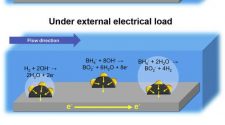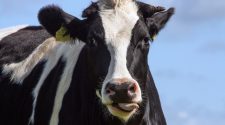Overnight freezing temperatures shattered several records this week ahead of a warming trend in the Bay Area over the weekend and a possible storm could bring light showers to the North Bay.
Richmond had a record low Thursday, with a temperature of 35 degrees, surpassing the previous record of 36 degrees in 1955, according to the National Weather Service. Records were also broken for Santa Rosa, which had a low of 26, beating out the last record of 28 degrees in 2018. In downtown Napa, it reached 25 degrees, breaking the record of 28 in 2018. Redwood City equalled its previous record of 30 degrees in 2018.
Marking the third day of sub-freezing temperatures, lows Friday were in the 20s along the interior portions of the Bay Area, with other parts outside of San Francisco getting into the 30s. A freeze warning and frost advisory remained in effect until 9 a.m. Friday. San Jose dipped to 34 degrees Friday morning while San Francisco had a low of 41. It’s expected to warm up into the 50s and lower 60s across the region as the cold air mass starts to move east and high pressure builds over the eastern Pacific Ocean.
Saturday is expected to be similarly chilly, with lows in the 30s and highs in the 60s. It could start warming up by Sunday, with some parts of the Central Coast climbing into the low 60s, with lows in the 30s and 40s during the morning. A mid-to-upper level trough is expected to push into the Pacific Northwest, bringing more cloud cover. San Jose is expected to have a low of 44 degrees and a high of 68, while San Francisco could see a low of 48 and high of 62.
The North Bay could see “very light rain” — about a tenth of an inch in northern Sonoma County and a couple hundredths for the rest of the area — late Saturday into Sunday morning. However, it looks bone dry in the forecast for the rest of the Bay Area, making a “Miracle March” less likely. High pressure will continue to dominate the weather pattern, pushing any potential storms into the Pacific Northwest instead of hitting the Bay Area. The pattern is typical of a La Niña occurrence in the Pacific Ocean, in which cold water rises and leads to droughts in western parts of the country.
“The ridge that’s set over the northeastern Pacific has been pushing the storm track to the north, so it looks like it’s breaking down over the weekend, which is going to allow some wet weather into the Pacific Northwest,” said forecaster Jeff Lorber. “That’s good news for them but for us, it doesn’t look like we’re going to get any or much of that moisture. We would need a deep trough to develop over the area to get some wet weather over here and the current pattern doesn’t look conducive to that.”
The storm earlier this week marked the first measurable rain to hit the region since early January, putting an end to a long dry spell and dropping around a tenth of an inch of rain across the Bay Area. Widespread hail was also reported, powder reaching the tops of the highest elevations in the region. Chews Ridge in Monterey got at least six inches of snow.
The storm also dumped snow on the Sierra Nevada. As of Wednesday morning, it snowed 22 inches at Homewood, 21 inches at Kirkwood, 20 inches at Northstar, 18 inches at Sugar Bowl, 17 inches at Palisades Tahoe and Bear Valley and 16 inches at Dodge Ridge.
Going into its third year of drought, California is facing increased wildfire risk and a depleted water supply heading into the warmer months. Atmospheric river storms in October and December built up the statewide Sierra Nevada snowpack to 168% of normal on New Year’s Day and marked the 21st wettest December on record for San Francisco, which has climate records dating back to 1849. By Thursday, the Sierra snowpack had dipped down to 66% of normal, according to the California Department of Water Resources.
The state’s drought severity has also worsened during this bout of dry weather. California’s “extreme drought” — the second most severe type of drought designated by the U.S. Drought Monitor — went from 1.39% on Feb. 15 to 6.7% on Feb. 22, marking a 5.31 point change.
“There’s too much uncertainty at this point to say,” Lorber said. “The extended outlook is looking fairly dry into the first half of March, so it’s not looking promising. Typically, March is one of our wetter months and the final month of our official wet season. If we don’t get anything in March, then it’s not going to be good once we get into April and transition into the dry season. Fire concerns will be heightened at that point, as they already are given our extremely dry past couple of months.”


















